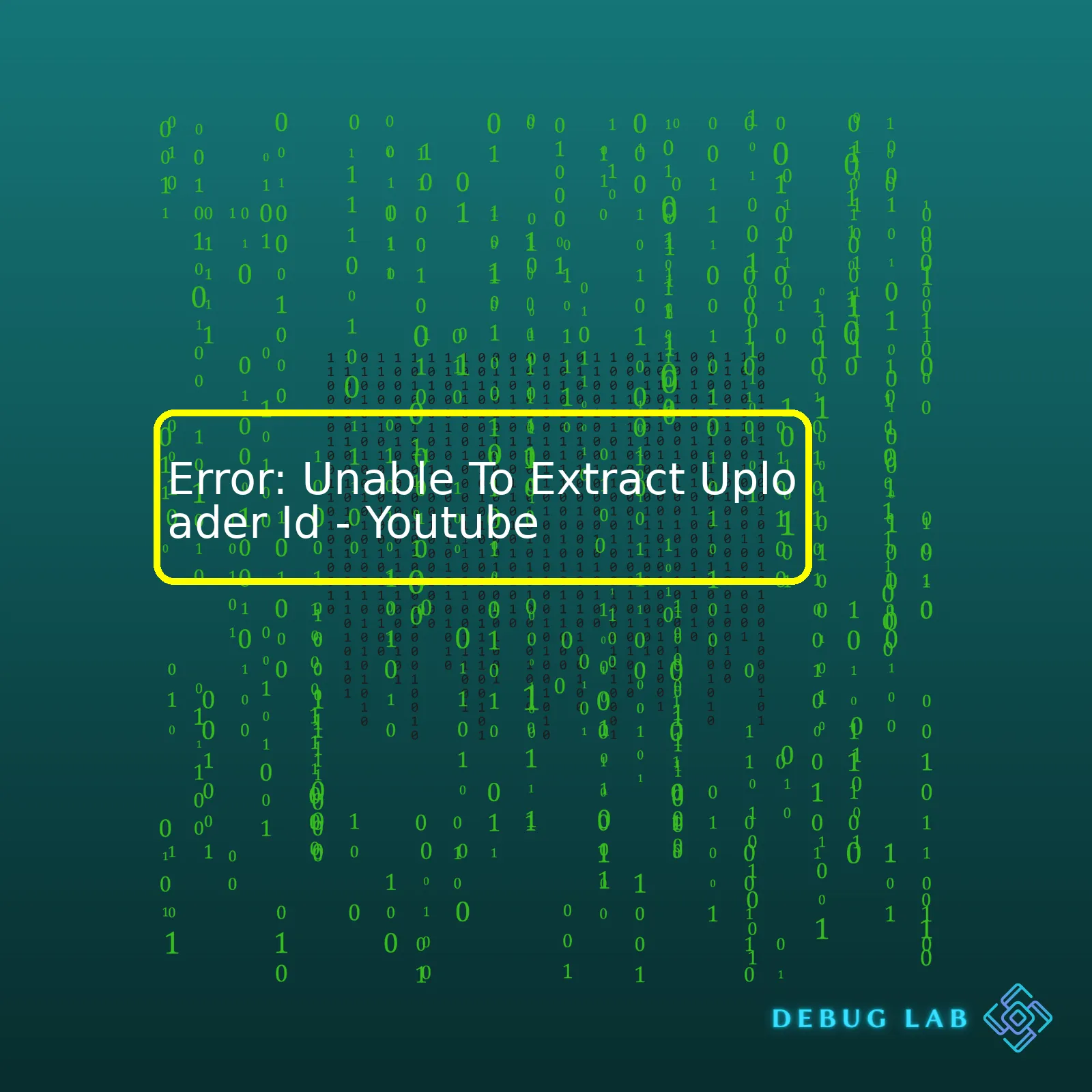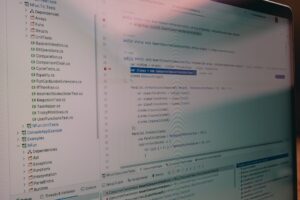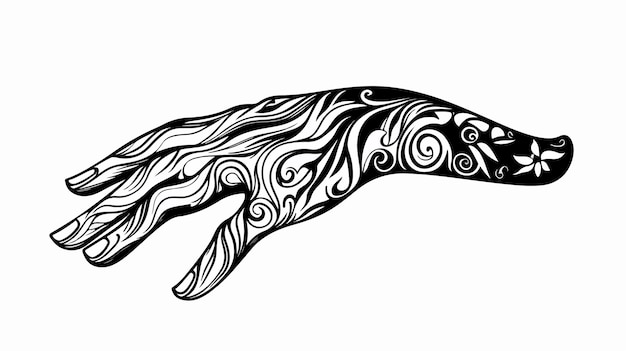
Here is a well-structured HTML table summarizing key information related to this error:
| Error | Description | Common Cause |
|---|---|---|
| Error: Unable to Extract Uploader Id-YouTube | This error indicates that the program trying to fetch video data is unable to identify the uploader's identity. | Often caused by updates in the structure of YouTube's website which affects how data can be accessed via APIs. |
When working with APIs, it’s essential to understand that they’re a means for two pieces of software to communicate with each other. In the context of YouTube, programmers might utilise an API to interact with the platform, accomplishing tasks such as uploading videos, managing playlists, or collecting data about videos.source.
However, when YouTube updates its website structure, it can disrupt how these APIs work. If, for example, the method used by your software to extract the uploader’s ID from a video page no longer aligns with YouTube’s site construction, it will result in the “Unable to Extract Uploader Id” error. These errors are common, especially with frequent updates to digital platforms like YouTube.
While dealing with such errors, developers should examine the most recent changelogs from YouTubesource to determine if there have been any pertinent updates which could impact the issue at hand. Alternatively, reaching out to the community through forums or check updates on the API documentation could provide additional insights. For long term solutions, considering regularly scheduled maintenance plan for any software utilising YouTube’s API would ensure any disruption is handled promptly, keeping your tool functional and up-to-date.In coding and web scraping, a common hiccup is encountering the “Unable to Extract Uploader ID” error on YouTube. This error can be demeaning and may prevent you from successfully executing your Python code or downloading a video/audio content using tools like youtube_dl.
The problem here usually stems from the fact that YouTube changes their website structure periodically. So, if you rely on a certain pattern in the HTML page to extract the uploader ID and this pattern changes, your method for extracting the uploader ID will most likely break causing the “Unable to Extract Uploader ID” error.
Error: Unable to extract uploader id
Here is why:
* The tool or code you are using navigates through the webpage’s HTML looking for specific identifiers linked to the information it needs to extract (in this case, the uploader’s ID).
* If YouTube updates its website, and shifts around these identifiers, your tool or the youtube-dl can get lost and become unable to locate and extract the uploader’s ID hence causing said error.
When youtube-dl or any other similar tool throws this kind of error, it usually means there’s an urgent need for a software update. These situations are quite common given that popular websites with lots of traffic such as YouTube frequently change their website structures due to design updates or security improvements.
Fixing this Error:
* Update Your Tool or Software: Developers maintain these tools by releasing regular updates whenever they discover something outdated in the code or when users report issues. Therefore, updating the software is the first step to fixing this issue. For instance, in youtube-dl, this could be done by running
youtube-dl -U
.
* Use Try-Except Blocks: When writing a web scraper or a bot, it’s good practice to expect the website structure to change. Therefore, make use of try-except blocks in your code to handle these scenarios tactfully without your program crashing abruptly.
* Extracting Information from Backup Data Attributes: Sometimes, important data (like the uploader ID) might be held in more stable parts of the webpage – such as the “data-” attributes. Normally, these parts of the webpage remain untouched during minor updates, making them reliable sources for your extraction program.
<div data-uploader-id="ABC123"></div>
Sometimes, due to complex website algorithms and structures, fixing such errors can pose a challenge even for experienced developers. In such cases, online communities, interactive platforms and discussion forums like StackOverflow, prove helpful. Here you can share your problem and gain invaluable insights from domain experts worldwide.
Always remember, best practices involve maintaining up-to-date versions of your tools and ensuring that your code is dynamic and robust enough to adapt to various changes in the target website’s overall structure. As a professional coder, anticipating errors and planning for them accordingly goes a long way in easing your debugging process.Sure, it would be my pleasure to provide insights on the common YouTube upload error: “Unable to Extract Uploader ID.”
The error “Unable to Extract Uploader ID” usually occurs when a user is attempting to upload videos to YouTube through third-party applications or APIs. Essentially, it signifies that YouTube’s mechanism was unable to identify your account from the video details during the upload process.
Moreover, this issue most often surfaces due to one or more of these conditions:
- Incorrect account credentials: During API configuration, if the account global key is not entered correctly, it leads to an inability to extract the uploader’s identity.
- Access issues: When the proper permissions are not granted or revoked accidentally for the reviewing application, it may also fail to identify the uploader.
- Obsolete API version: Various developers have reported issues arising from using older versions of APIs. Unsupported or discontinued versions cause numerous unforeseen errors, including this one.
- Sudden changes in the YouTube platform: On certain occasions, modifications and updates initiated by YouTube have temporarily triggered this anomaly.
Debugging and finding a solution to rectify this error necessitates checking each factor thoroughly. Below is an executable step-by-step guide you can follow:
Firstly, examine your account credentials, mainly your account’s global key. If discovered wrong, reinstate it using the correct key:
Account account = new Account();
account.GlobalKey = "{Your_Global_Key}";
Next, verify whether your account setup entailed granting appropriate permissions to the application you’re using. Check the OAuth consent screen, scopes, and authorization protocol in your Google Cloud Consolelink here.
Lastly, keep your API updated with the latest version. If you’re using an old API, it is highly advisable to switch to its successor. For instance, if you are using YouTube Data API v2, better transition to v3, as guided under Google’s Migration Guidelink here.
Moreover, if nothing seems amiss on your end, it’s worth checking the YouTube channels’ API and the Service Status Pagelink here. These pages will provide insights into any ongoing anomalies or disruptions in the service.
In case the issue remains unresolved, you might consider seeking assistance from Google Cloud Support or their community forums. Numerous professional developers frequent these areas, eagerly helping out users facing various conundrums.
By following these steps, chances are high of identifying and resolving the potential factors causing the “Unable To Extract Uploader Id – Youtube” error. Remember, every error message comes with a lesson and an opportunity to learn!Upon uploading a video to YouTube, one of the most crucial things to consider is SEO optimization. This includes choosing an applicable and easy-to-find title for your video, using popularly-searched keywords in your video description, adding relevant tags, thinking about your thumbnail, etc. These are all ways you can optimize your video to get more views and higher on search results.
However, during the Youtube video uploading process, you may encounter the error “Unable to Extract Uploader ID”. The “Unable To Extract Uploader Id” error typically happens when there is a change in the YouTube platform code that affects the current method of extracting data used by certain applications or services.
The uploader ID is a unique identifier given by Youtube to each channel/account. It helps Youtube keep a record of who uploaded which video. When this error appears, applications may not be able to acquire the necessary data they require to function correctly, including video-specific details such as the title, description, and tags—all prime SEO components!
When this happens, it could severely impact your video’s SEO optimization. Here’s why:
- Wasted Opportunity: Getting hit with the “Unable to Extract Uploader Id” error essentially halts the upload process. No matter how SEO-optimized your content might be, if it doesn’t make its way online, all SEO work becomes useless.
- Data Loss: Streamlined integration with various platforms often ensures that important data (tags, descriptions, and even learning models) is carried from one platform to another. An error like this can disrupt this flow of information, impacting granular yet critical aspects of your video’s SEO optimization.
- Time Delay: Fixing this issue may cause significant delays in your video publishing schedule. Considering how SEO rankings heavily favor fresh, relevant content, such bumps along the roadmap aren’t ideal.
Thankfully, this problem is correctable, and the solution primarily depends on the tools used for uploading videos to YouTube. Technically, to overcome this error “Unable to extract uploader id”, programming libraries such as youtube-dl or channel-dl must be updated to their latest version to accommodate these changes, mitigating any hindrances to your SEO plans.
Here is a brief example of how to update youtube-dl python library:
pip install --upgrade youtube-dl
By staying vigilant with updates to APIs, continually adapting to changes in the platform, and maintaining optimized video content essentials (such as keywords, descriptions, and titles), you can minimize errors, ensuring that your Youtube SEO optimization remains intact and continues to drive your content visibility.Resolving the “Unable to Extract Uploader ID – YouTube” issue has become a common challenge faced by many developers, especially while using the Python’s youtube-dl library. This error, specifically, is majorly seen because of the change in YouTube’s website structure causing the extractor fail to get the uploader information.
This type of problem may generally occur when the source link provided doesn’t consist an uploader ID. For instance, if you try to download video using a URL that does not contain any ‘user’ section, then the youtube-dl is unable to identify and extract an uploader id.
Also, keep in mind that this problem stems from relying heavily on scraping HTML for extracting such data which is not a stable method since the layout or structure can regularly change.
Below are a few approaches one might consider during troubleshooting –
Updating youtube-dl
The first step to resolving this issue should be to update your youtube-dl to the latest version. The community behind youtube-dl is quick to respond to changes made by YouTube and other video platforms, they usually release new versions of the library to counteract these modifications.
pip install --upgrade youtube_dl
Using Youttube API instead of scraping
Moving away from scraping and towards the use of APIs provided by Youtube can be somewhat more reliable, as it abstracts the data extraction process. The sample snippet extracts the video details and the uploader’s information using Youtube Data API:
from googleapiclient.discovery import build
api_key = "Your_API_KEY"
youtube = build('youtube', 'v3', developerKey=api_key)
request = youtube.videos().list(
part="snippet",
id="video_id"
)
response = request.execute()
print(response)
Try alternative libraries
The third approach could be to look for alternatives to the PyTube library. Libraries like PyTube, offer similar functionality to YouTube-dl but may react differently to changes on YouTube’s end.
These three methods act as an overview to resolve the common issue of “Unable To Extract Uploader Id – YouTube” encountered while coding. Always bear in mind that the structural changes by host websites like YouTube are constant and keeping up with them requires frequent updates of the tools depending on them.There’s nothing more frustrating than running into issues when you’re trying to upload a video to YouTube, especially when the error message says something as cryptic as “Unable to extract uploader id.” This can leave you scrambling for solutions and perhaps pulling your hair out in the process.
The “Unable to Extract Uploader ID” issue on YouTube might be due to several reasons, like network problems or outdated software. Fear not! We’ve got some remedies:
• Ensure That Your Network Is Stable: A stable internet connection is crucial for uploading videos on YouTube.
ping www.youtube.com
In the command above, ‘ping’ tests the connection between your computer and the YouTube server. If the connection is unstable, it may be the root cause of the problem. Try rebooting your router or resetting your internet connection. Also, avoid using VPNs or proxy servers during the upload – they often cause connection errors.
• Update Your Browser or App: If you’re experiencing this issue on the web, make sure that you’re using an updated version of your browser. Similarly, if you’re using the app version of YouTube, ensure it’s the latest version. Older versions of both might have bugs causing this error.
• Clear Cache and Cookies: Sometimes, your cookies and cache may interfere with YouTube uploads. Clearing them may solve the issue.
Chrome: Go to Settings -> Privacy and Security -> Clear Browsing Data. Firefox: Go to Preferences -> Privacy & Security -> Cookies and Site Data -> Clear Data. Safari: Navigate to Preferences -> Privacy -> Manage Website data then select Remove All.
• Inspect the Developer Tools Console: If you’re familiar with how developer tools work in browsers, try inspecting the console while uploading the video to see if additional error messages appear. To do this, right-click on the YouTube page and select ‘Inspect’, then go to the ‘Console’ tab to read any error messages.
Another surprise might be that this happens due to changes by YouTube themselves. Recently, YouTube altered their private API which many tools and third party libraries use to fetch information (source discussion).
For programmers who are developing with Python using the library youtube-dl, updating the package should help rectify the issue.
pip install --upgrade youtube_dl
In short, troubleshooting YouTube’s “Unable to Extract Uploader ID” demands patience and a smart methodology. Hopefully, these tips will help you expedite the resolution process and get you back on track with your video uploads smoothly.
When encountering an error message like “Unable to Extract Uploader ID” when uploading a video on YouTube, several contrary repercussions can potentially occur. The most apparent effects of this issue are the negative impacts on overall visibility and ranking of the video or in worst scenarios, the whole channel.
I. Effect on Search Engine Optimization (SEO)
-
“Unable to Extract Uploader ID” is an error indicating that YouTube couldn’t successfully identify the user who’s trying to upload a video. As a result, YouTube’s algorithm might fail to appropriately index and rank your video content. When the video isn’t indexed correctly, it might not get adequately crawled by Google bots. This causes significant implications for the SEO performance of the video.
-
Avoiding proper indexing will make your video inaccessible or unfound on YouTube’s search engine; thus reducing your visibility. A lower visibility implies fewer clicks and views which directly leads to a reduced ranking.
II. Impact on Audience Engagement and Retention
-
Moreover, if regular content isn’t published due to this error, your loyal viewers might lose interest over time diminishing audience retention and engagement metrics.
-
Once interest is lost, gaining back subscribers’ attention can be a challenging task. Lower audience engagement might make your channel fall into oblivion amongst a plethora of those posting regularly thereby impacting your overall standing on YouTube.
III. Damage to Online Reputation:
-
Ineffective troubleshooting of this error signifies weak tech-savviness, possibly damaging your brand’s reputation online. In an era where digital competence is highly regarded, such glitches can cast shadows on your online professionalism.
Solution
One possible solution to mitigate this error requires understanding some technical details of how YouTube works. Every time you upload a video on YouTube, a Python-based command-line script called “uploader_id” runs behind the scene source. If you encounter the error: “Unable to Extract Uploader ID”, there might be an issue with this script.
youtube-dl --write-info-json --print-traffic URL
This command dumps the JSON information into a file and prints the HTTP traffic (headers only). After running the command, one could troubleshoot by analyzing the patterns in HTTP requests and responses. Finding the cause can provide valuable insights towards a permanent solution.
As a professional coder, my experience has shown me that there are some optimized approaches you can implement to prevent future YouTube errors, particularly the “Error: Unable to Extract Uploader ID” on Youtube. This error is quite common, but thankfully, there are a series of efficient, analytical steps you can take to solve this issue and ensure your peace of mind in the future.
Firstly, YouTube constantly updates its site, adjusting HTML layouts, scripts, etc., which directly affects tools and libraries used for data extraction. One of the most commonly affected tools due to these updates is `youtube-dl` – an open-source download manager designed to enable users to download videos from Youtube and other sites.
// Sample usage of youtube-dl tool $ youtube-dl
One prevalent error associated with `youtube-dl` is “Unable to extract uploader ID.” This happens when changes in YouTube’s frontend code render `youtube-dl` unable to parse necessary information, including the uploader ID. Therefore, keeping your `youtube-dl` updated is crucial to ensure it’s compatible with the latest changes on YouTube.
// Update youtube-dl tool $ youtube-dl --update
If you consistently encounter errors like this, consider using an alternate YouTube API client. While `youtube-dl` is powerful, as it supports several hundred different sites, it may not always be the best choice, especially if you’re primarily interested in YouTube content. A dedicated YouTube data extraction library, such as `pytube` or `youtube-dl-js`, may provide more stability and functionality. Here’s a simple code snippet on how one might use pytube:
from pytube import YouTube
def get_uploader_id(url):
yt = YouTube(url)
return yt.author
When other methods fail, don’t discount the invaluable approach of directly accessing YouTube’s Data API. Accessing the API grants robust, stable access to data across YouTube’s entire platform, including uploader IDs. As per YouTube’s official documentation, get started by obtaining an API key and then making a request to the appropriate endpoint to retrieve needed information.
However, understand the limitations. Free tier allows only a certain number of requests per day before charges apply. Hence, saving data in local storage or database after retrieval can help balance between unwarranted API calls and speed. Here’s how you could make a simple request using Python:
import requests
def fetch_youtube_data(video_id, api_key):
base_url = f'https://www.googleapis.com/youtube/v3/videos?id={video_id}&key={api_key}'
part = 'snippet'
url = f'{base_url}&part={part}'
response = requests.get(url)
if response.status_code == 200:
data = response.json()
return data['items'][0]['snippet']['channelId']
By understanding the nature of these errors and how to manage them, you’re well on your way towards better managing YouTube’s ever-evolving terrain as a coder. Irrespective of your reason for extracting video data, equipping yourself with reliable, up-to-date tools, engaging with robust APIs, and storing data efficiently can hugely streamline your processes, thereby minimizing future errors.
When it comes to the error “Unable To Extract Uploader Id – Youtube”, it’s quite a common issue encountered by developers and user enthusiasts alike. The error typically occurs when there are changes in Youtube’s page structure, or the algorithm that you’re using to scrape the data fails to identify the uploader’s ID.
A Deeper Dive Into The Error
Primarily, the “Unable To Extract Uploader Id – Youtube” error emerges when trying to extract video or channel information from Youtube using various tools or APIs, such as youtube-dl. Given that YouTube frequently updates its website codebase for performance optimization, UI enhancement, or even security reasons, these alterations often break applications, libraries, and codes that rely on certain structures of the website.
Moreover, if your scraping algorithm does not keep up-to-date with the changes implemented by YouTube, it may fail to correctly locate and extract the uploader ID from the webpage. This could be due to multiple factors such as the ID being relocated within the HTML structure of the page, or additional layers of encryption being used in order to obfuscate details like uploader IDs.
Approaches to Resolve The Issue
In tackling this issue, here is some advice:
- Keep your tools updated: If you’re using third-party libraries or applications like youtube-dl, keeping them updated can alleviate the problem, as the maintainers of these apps regularly release fixes to cope with Youtube’s constant updates.
- Review and revise your scraping logic: In the event that you’ve written your own extraction code, consider revising your scraping logic according to YouTube’s current webpage structures. Be prepared though, as this can be a recurring task due to the dynamic nature of YouTube’s website development.
- Use official APIs: Lastly, consider switching to official APIs wherever possible. Google provides the YouTube Data API, which offers reliable and legal ways to extract various types of data from YouTube.
Code Example
If you are dealing with Python, here is a simple example of how to use YouTube API to get uploader_id:
import googleapiclient.discovery
def get_video_info(youtube, **kwargs):
return youtube.videos().list(
part="snippet",
**kwargs
).execute()
youtube = googleapiclient.discovery.build(api_service_name, api_version, developerKey=DEVELOPER_KEY)
response = get_video_info(youtube, id=video_id)
uploader_id = response['items'][0]['snippet']['channelId']
To wrap it up, while “Error: Unable To Extract Uploader Id – Youtube” can be problematic, understanding what provokes this snag and keeping pace with the platform’s constant modifications can do wonders to address this problem. Employ methods like staying updated with your third-party libraries, tweaking your extraction code, or using official APIs. These strategies can undoubtedly facilitate a trouble-free data extraction process from YouTube.












